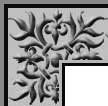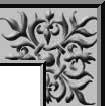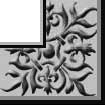

INDEXReading Revolutions: Ideas for Teaching
Learning ActivitiesHistory ActivitiesThe history activities stress building relationships between different concepts and the ability to see the development of culture across time. Students should see the impact of history on the ordinary people of the time, their beliefs, lifestyle, and choices. Emphasis should be on concurrent trends in economics, industry, education, human rights and literature and art. What stimulates change?
Time and Dates Different Countries You Are There Emancipation Proclamation Magna Carta
Literacy ActivitiesThe literacy activities can be used with any of the works included in the Reading Revolutions collection. These activities are directed toward integrating writing with a deeper appreciation of the works. By using the texts as a starting point for creative writing, the students will need to read closely to accurately report the ideas and reflect them in their own work. Dr. DeVito has described seven main approaches, each with learning objectives.
Have fun with them: A diary of a cavalier with the Barons at Runnymeade, letters from John Adams to John Quincy Adams, Toqueville writing home to France about what he is doing, Mary Wollstonecraft writing to her husband from Switzerland about her views, and Hume and Kant debating points of philosophy are just a few things you can do with your classes.
Instructional Texts Recounts of events Letters News Reports Evening News Diaries A Week of Diary Writing Writing New Scenes
ArtBooks are often works of art in themselves. The choice of typeface, paper, binding, style, and illustration contribute to the message of the book and the appreciation of the reader. While Reading Revolutions contains some of the greatest literature ever published, it also contains a historical and artistic record of our culture.
The Art of the Book Themes of Freedom in Art Influence of Art on Culture

